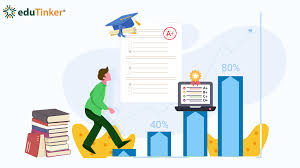At TEMS Tech Solutions (TTS), our Educational Performance Metrics service provides educational institutions, policymakers, and stakeholders with comprehensive insights into student performance, teaching effectiveness, and overall institutional success. By leveraging advanced analytics, data visualization, and benchmarking techniques, we empower organizations to make data-driven decisions that enhance educational outcomes.
Key features include:
-
Student Achievement Analysis: Evaluate student performance across various metrics, including standardized test scores, grades, and graduation rates, to identify strengths and areas for improvement.
-
Teacher Effectiveness Metrics: Analyze teacher performance through classroom observations, student feedback, and academic outcomes, providing insights into instructional effectiveness and areas for professional development.
-
Curriculum Effectiveness Assessment: Assess the impact of different curricula on student learning outcomes, enabling institutions to make informed decisions about course offerings and teaching methods.
-
Demographic Performance Disparities: Analyze performance data by demographic factors such as gender, ethnicity, and socioeconomic status, helping identify achievement gaps and inform targeted interventions.
-
Attendance and Engagement Metrics: Monitor student attendance and engagement levels to understand their impact on academic performance, helping to develop strategies for increasing participation.
-
Longitudinal Data Tracking: Track student performance over time to identify trends and evaluate the long-term effectiveness of educational programs and interventions.
-
Predictive Analytics for Student Success: Utilize predictive modeling to identify at-risk students early, allowing for timely interventions and support to improve their chances of success.
-
Course Completion and Retention Rates: Analyze data on course completion and retention rates to understand student persistence and identify barriers to success.
-
Assessment and Feedback Analysis: Evaluate the effectiveness of assessments and feedback mechanisms, ensuring that they align with learning objectives and support student growth.
-
Program Evaluation and Impact Assessment: Assess the impact of educational programs and initiatives on student outcomes, helping institutions make data-informed decisions about resource allocation and program development.
-
Peer Benchmarking: Compare educational performance metrics against similar institutions to identify best practices and opportunities for improvement.
-
Data Visualization Dashboards: Provide interactive dashboards that visualize key performance metrics, trends, and comparisons, enabling educators and administrators to make informed decisions.
-
Stakeholder Reporting: Generate comprehensive reports for stakeholders, including administrators, teachers, and policymakers, to communicate findings and recommendations effectively.
-
Student Feedback and Satisfaction Surveys: Analyze student feedback to assess satisfaction with courses, teaching quality, and overall educational experience, informing improvements.
-
Professional Development Needs Assessment: Identify areas for teacher professional development based on performance metrics and student outcomes, enhancing instructional quality.
-
Equity and Access Analysis: Evaluate access to educational resources and opportunities for underrepresented groups, ensuring equitable educational experiences for all students.
-
Parental Engagement Metrics: Assess the level of parental engagement in student education and its impact on student performance, guiding outreach efforts.
-
Resource Allocation Analysis: Analyze the effectiveness of resource allocation on educational performance, ensuring that funding and support are directed toward areas of greatest need.
-
Impact of Extracurricular Activities: Evaluate the impact of extracurricular activities on student performance and engagement, helping institutions promote well-rounded educational experiences.
-
Technology Integration Assessment: Analyze the impact of technology use in the classroom on student learning outcomes, guiding decisions about educational technology investments.
-
Continuous Improvement Framework: Establish a framework for continuous improvement in educational practices based on data-driven insights, ensuring that institutions adapt to changing educational needs.






Reviews
There are no reviews yet.